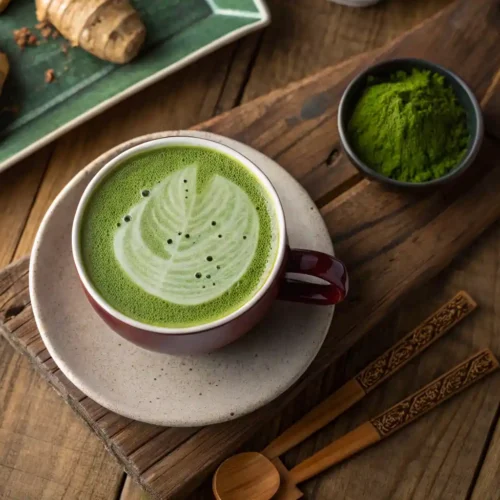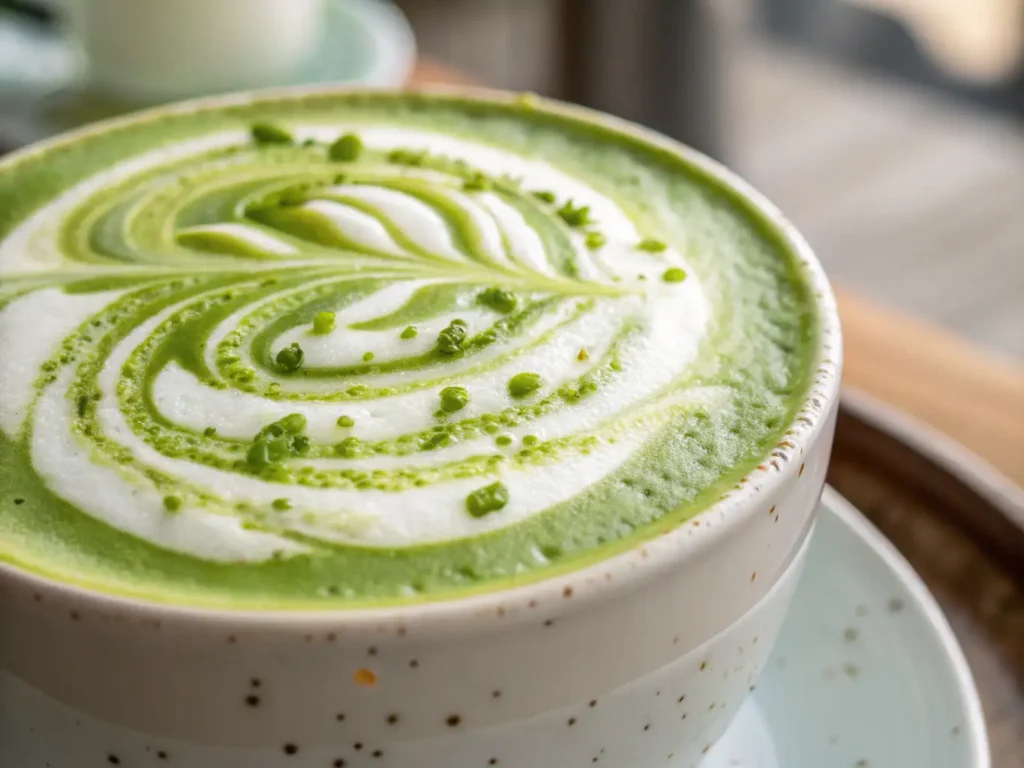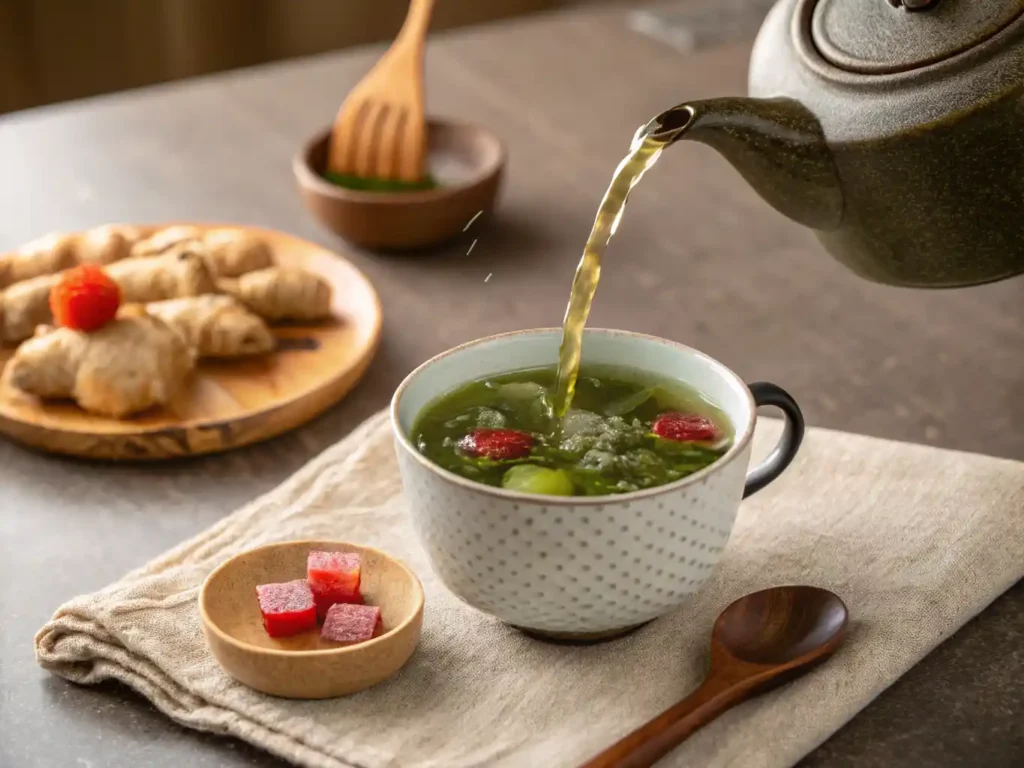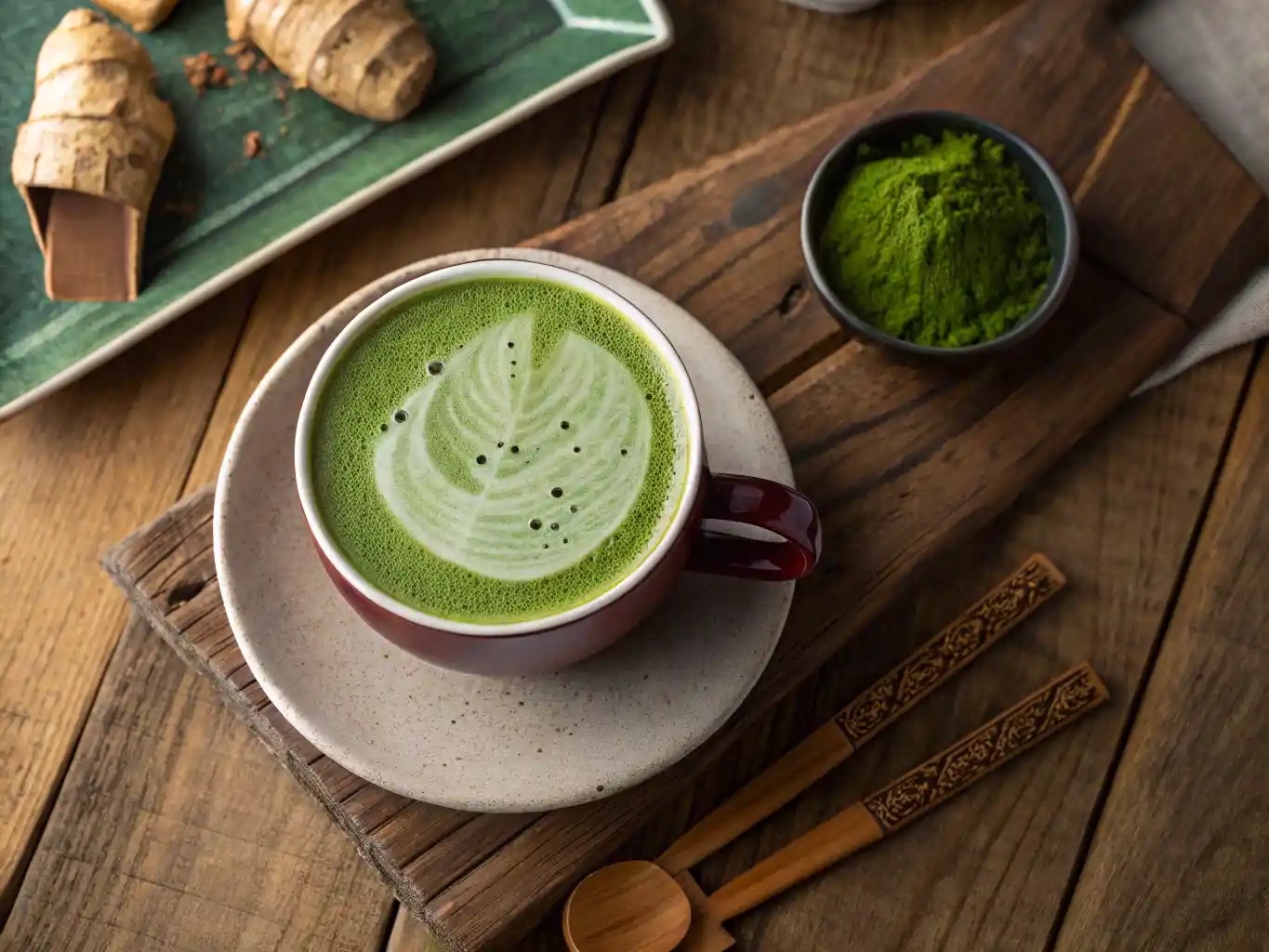What is the Japanese Mounjaro recipe?
I first came across the Japanese Mounjaro recipe during my research on traditional Japanese wellness drinks, and its combination of matcha, umeboshi plum, kombu, and fresh ginger immediately caught my attention.
This unique beverage dates back to centuries-old Japanese wellness practices where food and healing worked together to support digestion and vitality.
When I looked deeper, I found references to konbu-cha—a savory kelp tea—that inspired the use of kombu seaweed in this drink.
Over time, modern wellness blogs adapted the recipe into the Mounjaro detox drink I know today, emphasizing its detoxifying and metabolism-boosting properties.
Table of Contents
Why Try This Drink?
I love enjoying Japanese Mounjaro because the earthy matcha powder delivers a smooth caffeine lift without the jitters of coffee.
My taste buds appreciate the tangy-salty hit of umeboshi plum, which also provides gentle detox support.
The mineral-rich kombu adds a subtle umami depth and iodine, which I find helps balance my energy throughout the day.
Fresh ginger brings a warming spice and aids in soothing digestion, making it a comforting ritual in my morning routine.
Ingredients You’ll Need
- 1 teaspoon high-quality matcha powder
- 1 umeboshi plum (or 1 Tbsp umeboshi paste)
- 1 small strip of kombu (about 2 inches)
- ½ teaspoon freshly grated ginger (adjust to taste)
- 1 cup hot water (around 175°F / 80 °C)
- Optional: 1 tsp raw honey or a squeeze of lemon juice for sweetness
Tip: I choose high-grade matcha for a smoother flavor and organic umeboshi for the best tangy-salty punch.
Step-by-Step Preparation
- Steep the Kombu Base
I place the kombu strip in my preheated water and let it steep for 3–5 minutes, then remove and discard the kombu. - Whisk the Matcha
I spoon the matcha into a small bowl, add a splash of warm water, and whisk vigorously in a zig-zag motion until light and frothy. - Add Umeboshi and Ginger
I mash the umeboshi plum (or stir in the paste) and freshly grated ginger directly into my serving mug. - Combine and Serve
I pour the kombu-infused water over the umeboshi-ginger mash, add the frothy matcha, stir gently, and garnish with lemon or honey if I’m craving a hint of sweetness.

Japanese Mounjaro Recipe: Natural Weight Loss Drink
Ingredients
- 1 teaspoon matcha powder good quality if possible
- 1 umeboshi plum or about 1 teaspoon umeboshi paste
- 1 slice fresh ginger finely grated
- 1 small piece dried kombu thumb-sized
- 8 ounces warm water around 160–170 °F
- Optional: splash of lemon juice or drizzle of honey
Instructions
- Grate the ginger, measure the matcha, and prepare the kombu.
- Heat water to 160–170 °F, not boiling.
- Steep the kombu in the warm water for 5 minutes.
- In a separate bowl, whisk the matcha powder with a splash of warm water until frothy.
- Remove kombu from the water.
- Stir in the umeboshi, grated ginger, and frothy matcha into the kombu water.
- Adjust flavor with lemon juice or honey if desired.
Notes
- For a refreshing summer version, chill and serve over ice.
- Customize with oat or coconut milk for a creamier twist.
- If you’re new to kelp, start with a smaller amount and increase to taste.
- Always consult your healthcare provider before using regularly if you have thyroid conditions.
Tips and Variations
Ingredient Substitutions & Add-Ons
- Apple Cider Vinegar: I sometimes add a splash of apple cider vinegar for a tangy boost that may support digestion and blood sugar control.
- Lemon Zest: I like to finish with a little lemon zest for a bright citrus aroma and extra vitamin C, similar to my favorite honey-lemon-ginger tea blend.
- Turmeric: I’ll whisk in a pinch of turmeric for added anti-inflammatory benefits, thanks to its curcumin content.
- Coconut Water: I sometimes dilute the brew with a splash of coconut water for natural electrolytes and gentle sweetness.
- Raw Honey: I often drizzle raw honey to mellow the tang and add antioxidants, reminiscent of classic tea recipes.
For more creative matcha ideas, check out Healthline’s Matcha Recipes.
Best Times to Drink
- Morning Ritual: I enjoy Japanese Mounjaro first thing for its gentle caffeine lift without the jitters of coffee.
- Mid-Day Boost: I reach for it mid-day to sustain focus and steady energy, thanks to matcha’s balanced caffeine and L-theanine.
- Post-Meal Digestive Aid: I sip it after meals to soothe digestion, leveraging ginger’s anti-nausea properties and umeboshi’s digestive support.

Storage and Make-Ahead
I often prepare the kombu-infused base and matcha slurry ahead of time so I can assemble a fresh cup in seconds.
I store the matcha paste in an opaque, airtight container in my fridge—where it stays fresh for up to six months—and the kombu infusion in a sealed bottle for up to 48 hours for best flavor and safety.
People Also Ask
What are the health benefits of Japanese Mounjaro?
Matcha provides a concentrated source of antioxidants and a smooth caffeine boost for energy and mental clarity.
Umeboshi plums offer organic acids and minerals that may support cardiovascular health and gentle detoxification.
Kombu seaweed delivers iodine, vitamins, and prebiotic fiber for thyroid function and gut health.
Ginger contributes anti-inflammatory compounds that soothe digestion and reduce nausea.
Can I drink Japanese Mounjaro every day?
Yes—experts recommend 1–2 teaspoons (2–4 grams) of matcha powder per day for health benefits without excess caffeine.
How long can I store prepared Japanese Mounjaro?
Stored in an airtight container in the fridge, your assembled Mounjaro will stay tasty and safe for up to 48 hours.
For maximum flexibility, some sources note it can last up to 5 days—though flavor and potency may decline after the first 2 days.
Is Japanese Mounjaro suitable for beginners?
Absolutely—it uses simple steps like whisking matcha, mashing umeboshi, and steeping kombu, all with basic kitchen tools.
All you need is a whisk, a mug, and these straightforward ingredients—no special equipment required.

Conclusion & Call to Action
I hope these tips inspire you to customize your Japanese Mounjaro and make it your own daily ritual! Try it out, then drop a comment below, rate the recipe, or share your photos. If you’re hungry for more tea-centric recipes, explore my recipes for additional inspiration.
For deeper dives into seaweed’s benefits, see Healthline’s Seaweed Guide.

